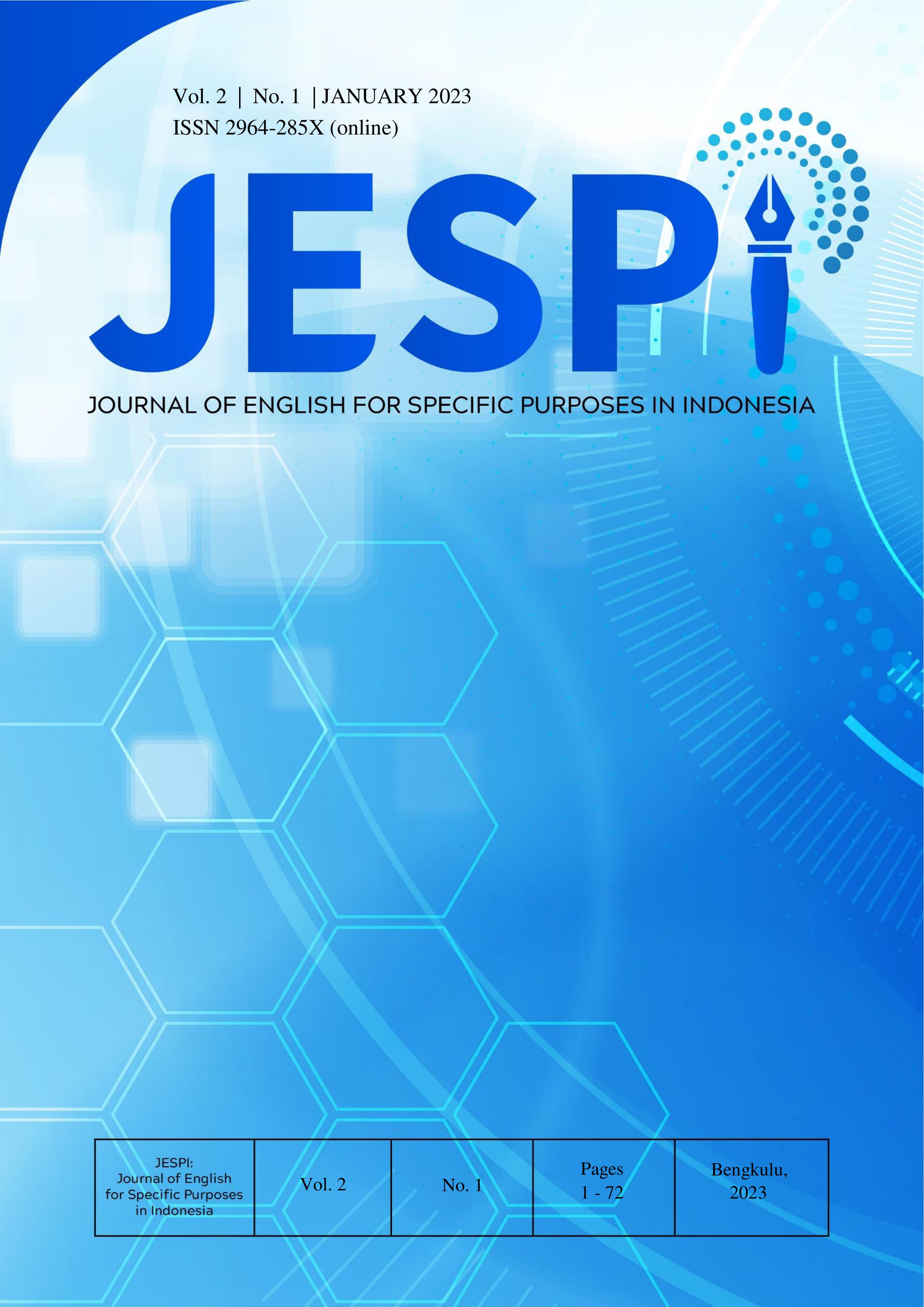Main Article Content
Abstract
The inclusion of literature as one of the program's learning components English language, effective second-language usage, and effective use of English as a foreign language. Discuss the advantages of employing literature from different genres, such as poetry, theater, novels, or short stories, while teaching English in the decades past. The purpose of research is to identify short stories as a type of literature that may be utilized in English language learning or to improve language abilities. Because short stories have some advantages, like text that is interesting and can encourage students to learn the language Bitain, which is adapted to the level of understanding of the English language student, they have been chosen as a literary genre used as learning materials for the English language. The students’ perception in using short story of English language instruction can be seen from the perspectives of increased student vocabulary, text comprehension readings that allow students to translate the story into their own language, and students' ability to comprehend the historical context of the story.
Keywords
Article Details
Copyright (c) 2023 Suzia Maretha, Ira Maisarah, Mega Fitri Wulandari

This work is licensed under a Creative Commons Attribution-ShareAlike 4.0 International License.

Ciptaan disebarluaskan di bawah Lisensi Creative Commons Atribusi-BerbagiSerupa 4.0 Internasional.
References
- Akande, S. O. (2009). Knowledge, perception, and attitudes of library personnel towards preservation of information resources in Nigerian Federal University Libraries. Library philosophy and practice (e-journal), 1 (8), 303-305.
- Akbari, O. & Razavi, A. (2016). Using Authentic Materials in the Foreign Language Classrooms: Teachers’ Perspectives in EFL Classes. International Journal of Research Studies in Education, 5(2). 105-116
- AS Homby, Oxford Advance Learner”s Dictionary, (New York: Oxford University Press,2000),p.1235.
- Cresswell, J. W. (2017). Research Design: Qualitative, Quantitative, and Mixed Methods Approaches. SAGE Publications.
- Hazari, A. (2014). Learning Curve: student perceptions have a huge impact on understanding (Electronic Version) South China Morning Post.
- Hisjnanoglulists, Murat. (2005). Teaching English Through Literature, Journal of Language and Linguistic Studies Vol. 1, No. 1, April.
- Khatib, S. (2011). Applying the Reader-Response Approach in Teaching English Short Stories to EFL Students. Journal of Language Teaching and Research, 2(1), 151-159.
- Kusuma, T. (1986). Pengelolaan Pengajaran Bahasa Inggris, Departemen Pendidikan dan Kebudayaan, Jakarta.
- Miles, M. B., Huberman, A. M., & Johnny, S. (2014). Qualitative Data Analysis: An E Methods Sourcebook (3rd ed.). Sage Publication, Inc.
- Pardede, P. (2011). Using Short Stories to Teach Language Skills. Journal of English Teaching, 1(1). p.17
- Pourkalhor, O. & Kohan, N. (2013). Teaching Reading Comprehension Through Short Stories in
- Advance Classes. Asian Journal of Social Sciences & Humanities, 2(2)
- Punaji, H. S. (2013). Metode Penelitian Pendidikan dan Pengembangan., edisi ketiga, Kencana prenadamedia Group.
- Sugiyono. (2017). Metode Penelitian Kuantitatif, Kualitatif, dan R & D. Alfabeta.
- Tarakcioglu, A. O. & Tuncarslan, H. K. (2014). The Effect of Short Stories on Teaching Vocabulary to Very Young Learners: A Suggested Common Syllabus. Journal of Language and Linguistic Studies, 10(2). 67-84
- Tasneen, W. (2010). Literary Texts in the Language Classroom: A Study of Teachers’ and Students’ Views at International Schools in Bangkok. Asian EFL Journal, 12(4)
- Ziya, S. (2009). Efficiency of Literature-Integrated Approach on Vocabulary Competence (Master’s Thesis). Trakya University, Edirne. Retrieved from http://tez2.yok.gov.tr/
References
Akande, S. O. (2009). Knowledge, perception, and attitudes of library personnel towards preservation of information resources in Nigerian Federal University Libraries. Library philosophy and practice (e-journal), 1 (8), 303-305.
Akbari, O. & Razavi, A. (2016). Using Authentic Materials in the Foreign Language Classrooms: Teachers’ Perspectives in EFL Classes. International Journal of Research Studies in Education, 5(2). 105-116
AS Homby, Oxford Advance Learner”s Dictionary, (New York: Oxford University Press,2000),p.1235.
Cresswell, J. W. (2017). Research Design: Qualitative, Quantitative, and Mixed Methods Approaches. SAGE Publications.
Hazari, A. (2014). Learning Curve: student perceptions have a huge impact on understanding (Electronic Version) South China Morning Post.
Hisjnanoglulists, Murat. (2005). Teaching English Through Literature, Journal of Language and Linguistic Studies Vol. 1, No. 1, April.
Khatib, S. (2011). Applying the Reader-Response Approach in Teaching English Short Stories to EFL Students. Journal of Language Teaching and Research, 2(1), 151-159.
Kusuma, T. (1986). Pengelolaan Pengajaran Bahasa Inggris, Departemen Pendidikan dan Kebudayaan, Jakarta.
Miles, M. B., Huberman, A. M., & Johnny, S. (2014). Qualitative Data Analysis: An E Methods Sourcebook (3rd ed.). Sage Publication, Inc.
Pardede, P. (2011). Using Short Stories to Teach Language Skills. Journal of English Teaching, 1(1). p.17
Pourkalhor, O. & Kohan, N. (2013). Teaching Reading Comprehension Through Short Stories in
Advance Classes. Asian Journal of Social Sciences & Humanities, 2(2)
Punaji, H. S. (2013). Metode Penelitian Pendidikan dan Pengembangan., edisi ketiga, Kencana prenadamedia Group.
Sugiyono. (2017). Metode Penelitian Kuantitatif, Kualitatif, dan R & D. Alfabeta.
Tarakcioglu, A. O. & Tuncarslan, H. K. (2014). The Effect of Short Stories on Teaching Vocabulary to Very Young Learners: A Suggested Common Syllabus. Journal of Language and Linguistic Studies, 10(2). 67-84
Tasneen, W. (2010). Literary Texts in the Language Classroom: A Study of Teachers’ and Students’ Views at International Schools in Bangkok. Asian EFL Journal, 12(4)
Ziya, S. (2009). Efficiency of Literature-Integrated Approach on Vocabulary Competence (Master’s Thesis). Trakya University, Edirne. Retrieved from http://tez2.yok.gov.tr/
